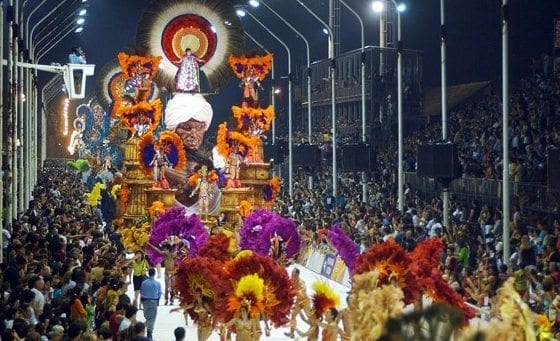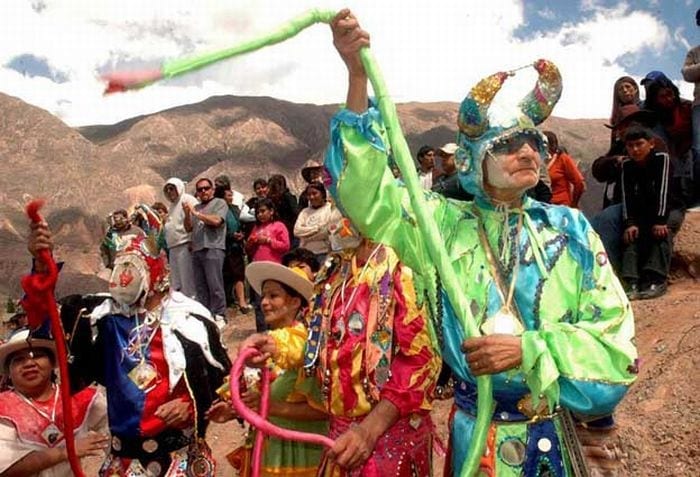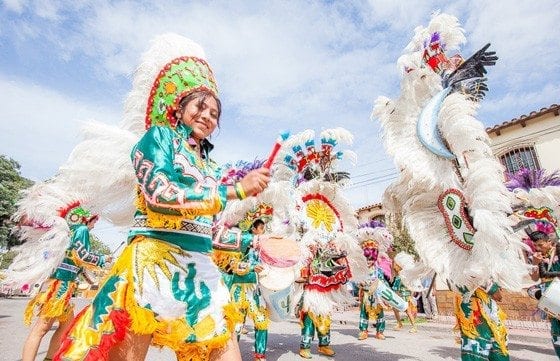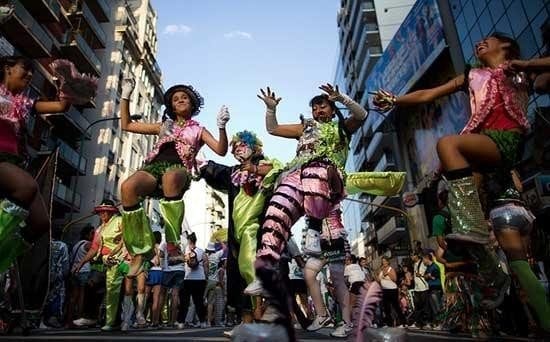Table of Contents
- The Extravagance of Gualeguaychú: Argentina’s Rio-Style Carnival
- Unveiling the Carnival Festivities in Buenos Aires
- The Rich Tapestry of Argentine Carnival Traditions
- Carnival Celebrations in Argentina: A Cultural Phenomenon
- The Musical Rhythms of Argentine Carnival
- Other popular carnival destinations:
There is a reason why Carnivals seem to be a new cultural custom in Argentina but it has actually been around in this land since hundreds of years ago. The very origin of Carnival in Argentina can be traced back to the 1600’s during the Spanish colonial time. The Carnival started as a celebration of a mixture of Spanish heritage and the Commando dance performed by the black slaves. At first, they were only practiced privately in individual houses but slowly over the centuries, they were expanded to neighborhood clubs and then developed into the more organized public street celebrations completed with masks, colorful costumes, elaborated floats and parades. The popularity of Carnival celebrations reached its new heights in early 1900’s.
In 1956, the Carnival days were recognized as public holidays, but 20 years after, the military dictatorship removed them as holidays. It was because of this change, many of the Carnival traditions in Argentina had been interrupted and lost. Even though they weren’t as wildly celebrated and observed as before, a few cities have kept the traditions going. In the case of the City of Buenos Aires, they have replaced it with a different form called ‘murgas‘, an attempt to keep the Carnival spirit alive.
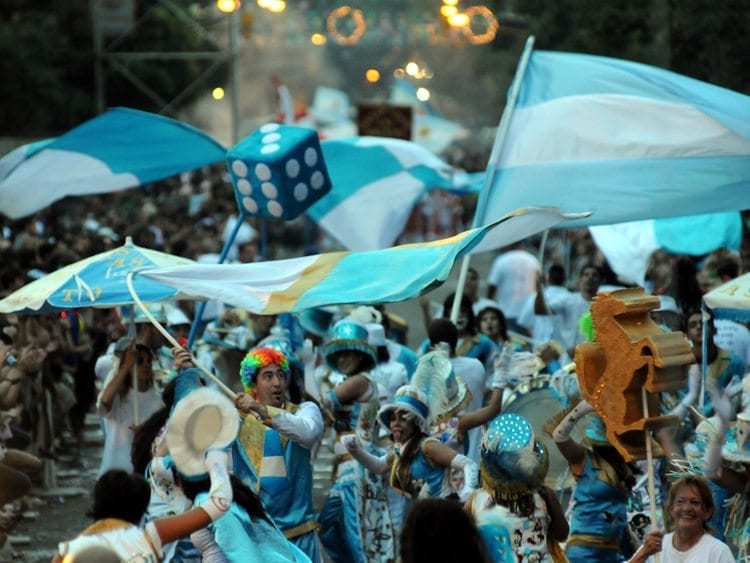
The carnival traditions in Buenos Aires are particularly renowned, with the city transforming into a bustling hub of joyous Buenos Aires carnival events. Revelers enjoy street parties that last from dusk till dawn, enveloped in an atmosphere infused with the energy of the traditional Argentine carnival. This is the peak moment for experiencing the vibrant Mardi Gras Argentina scene, a time when the unique aspects of carnival in Argentina history come alive through music, dance, and jubilant parades.
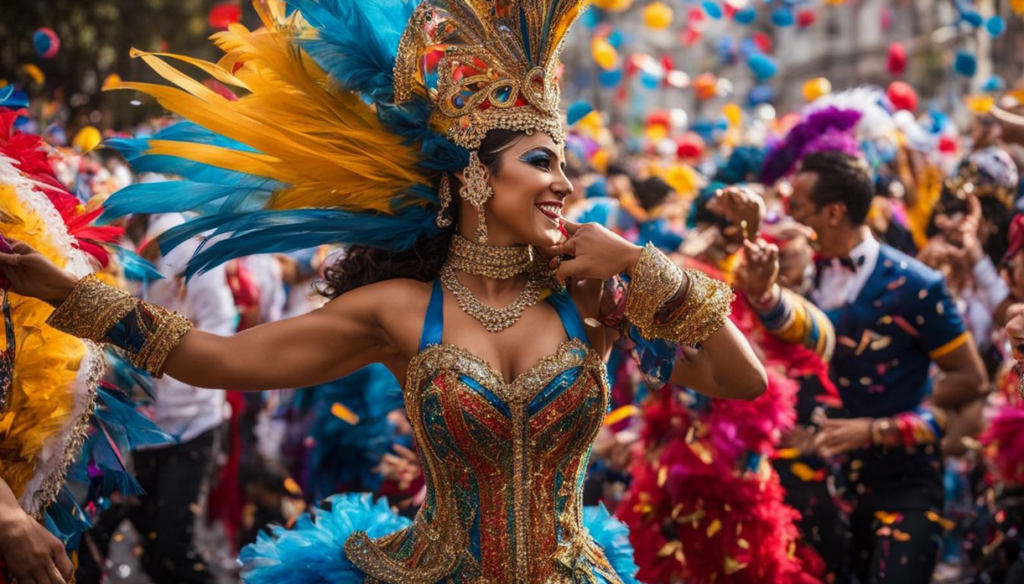
The Extravagance of Gualeguaychú: Argentina’s Rio-Style Carnival
Amid the celebrated South American carnival celebrations, the city of Gualeguaychú stands as a beacon of jubilation, rivalling the renowned spectacles of its northern counterparts. Here, the fusion of vibrant carnival floats in Argentina and the rhythm of samba encapsulate the essence of a true Argentine Carnival. This section delves into the city’s flagship Corsódromo festivities and the vivacious carnival street parties that punctuate the Argentine nights with relentless merriment.
Embracing the Corsódromo Festivities
As one of the most popular carnival venues in Argentina, the Corsódromo in Gualeguaychú ignites with an unrivaled exuberance. A symphony of colors and sounds greets visitors as the venue comes alive with the grandiosity of traditional carnival parades in Argentina. Each year, ensembles adorned in dazzling attires and elaborate floats showcase the city’s cultural magnificence, drawing in a multitude of spectators, both local and international.
The Unmissable Nights of Carnival Street Parties
When the sun dips below the horizon, the essence of Gualeguaychú’s nocturnal revelry takes over. The streets transform into arteries of pure festivity, as the community engages in revelry until the break of dawn. The vibrant street parties echo the spirit of the traditional Argentine carnival parades, where laughter, dance, and the spirit of camaraderie reinstate the timeless tradition of welcoming all to join in the festivities.
Unveiling the Carnival Festivities in Buenos Aires
Buenos Aires stands out as a beacon of Argentina’s vibrant carnival culture, beckoning travelers from afar to delight in its colorful and electric atmosphere. The city’s passion for celebration is on full display during the carnival season, offering a rich tapestry of experiences that epitomize the spirit of Argentine cultural celebrations.
Amidst the backdrop of this cosmopolitan city, the Buenos Aires carnival festivals emerge as a spectacular fusion of sights, sounds, and revelry. From the sultry moves of tango to the exhilarating beats of carnaval, argentine carnival music and dances play a pivotal role in the festivities. The streets become stages for dancers and musicians alike, creating a rhythm that pulses through the heart of Argentina.
The popular carnival destinations in Argentina offer more than just a party; they are a homage to the country’s heritage and communal identity. The carnival music and dances in Argentina carry a legacy that turns every street corner into a venue for connection and joy, reflecting a centuries-old tradition that continues to evolve and enchant.
| Neighborhood | Activity Highlights | Music and Dance Styles |
|---|---|---|
| Palermo | Vibrant night parades with elaborate floats | Tango, Milonga, Candombe |
| San Telmo | Historical reenactments and murgas | Murga, Tango, Folkloric Dances |
| La Boca | Artistic displays and street performers | Samba, Tango, Milonga |
| Recoleta | Upscale masquerade balls and cultural exhibitions | Classical Music, Tango |
The variety of Buenos Aires carnival festivals truly encapsulates the dynamic and inclusive nature of Argentine cultural celebrations, with each neighborhood offering its unique flavor to the collective festivity. Whether one is drawn to the energetic beats of drumming or the elegant poise of tango, Buenos Aires provides a cultural mosaic that caters to every taste and sensibility.
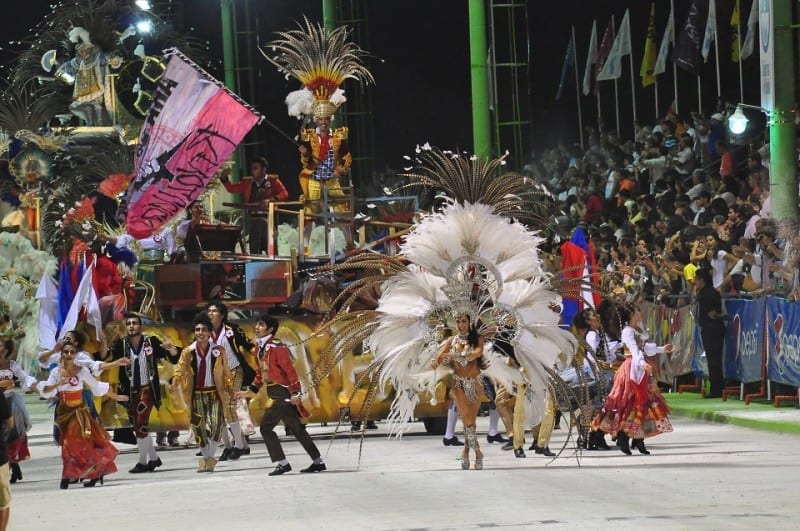
By partaking in these celebrations, visitors and locals alike contribute to the ever-vibrant narrative of Argentina’s carnival, upholding the legacy and ensuring the perpetuation of a culture that has long brought people together in the name of joy and community.
- Palermo’s flair for fashion-forward parades
- San Telmo’s mix of historical charm and contemporary revelry
- La Boca’s artistic vibrance and lively character
- Recoleta’s blend of opulence and tradition
In summary, to experience Buenos Aires during the carnival is to witness the heart of Argentine jubilation—an event that not only showcases the country’s commitment to its cultural roots but also invites the world to dance to the eclectic beat of its storied and animated ethos.
The Rich Tapestry of Argentine Carnival Traditions
Dive into the colorful world of Argentine carnival traditions, where vibrant expressions and historical roots infuse the lively festivities with a distinct cultural flair. Each year, the streets of Argentina come alive with a spectacle of music, dance, and costumes that encapsulate the country’s rich carnival history and culture.
Murgas: The Soulful Street Performances
Murgas, the heartbeat of Argentina’s carnivals, are dynamic and theatrical street performances that seamlessly blend satire with festivity. These groups, wearing their signature argentine carnival costumes, are a testament to the diverse cultural influences that shape argentinian carnival traditions. Enthused with high-energy, these performers bring together crowds through their passionate renditions that reflect the lively spirit of Argentine carnival.
The Mystique of Masks and Costumes
The alluring mystique of Argentina carnival masks and carnival costumes in Argentina is central to the celebration’s visual grandeur. Intricate designs and handcrafted details reveal the profound craftsmanship, signifying the generational artistry and deep cultural significance within Argentine society. These costumes and masks are not merely attire but are emblematic of identities that transform the wearers into embodiments of a vibrant historical narrative.
| Carnival Element | Description | Significance |
|---|---|---|
| Murgas | Colorful theatrical ensembles that perform on the streets | Represent the social and political satire, historical storytelling, and community unity |
| Masks | Symbolic headpieces that conceal identity | Allow for freedom of expression and the embodiment of different characters |
| Costumes | Flamboyant outfits with intricate designs | Showcase the region’s textile craft and contribute to the vibrancy of the festivities |
Carnival Celebrations in Argentina: A Cultural Phenomenon
The effervescent allure of the cultural heritage of Argentine carnival reveals itself as the nation’s calendar marks the arrival of the quintessential season of jubilation. Imbued with vibrant hues and vivacious sounds, the carnival festivals in Argentina present a dynamic tableau of human expression, synonymous with unfettered joy and communal solidarity.
It is during these festive days that the pulsating music and dance in Argentine carnival come to the fore, captivating hearts and spirits alike. The melodies that soar through the air are not simply sounds; they are sonic legacies that have intertwined with the delicate tapestry of Argentina’s identity. With each rhythmic drumbeat and exuberant dance move, participants and spectators alike engender a kinship that transcends mere festivity.
Amidst the revelry, the cultural significance of carnival in Argentina is eloquently narrated by performers whose passionate displays mirror a story rich in history. As an echo of the nation’s varied traditions, the Argentine Mardi Gras encapsulates an enduring narrative, a communal journey from the roots of indigenous celebrations to the flourishing inclusivity of modern festivities.
- Unity in Diversity: A showcase of the myriad regional influences on Argentina’s carnival celebration.
- Rhythms of Celebration: An exploration of the relationship between Argentine identity and carnival music and dance.
- Panorama of Joy: Tracing the cultural heritage through the effervescent spirit of Argentine carnival revelers.
Throughout the festivities that span from north to south, each festival in Argentina is a testament to the enduring allure of a culture that is at once proud and inclusive. The sequins and feathers, the laughter and song, all contribute to an experience that is not only a grand festivity but also a bridge connecting the present to a profound, culturally rich past.
The Musical Rhythms of Argentine Carnival
The Argentine Carnival is not just a visual spectacle; it’s an auditory voyage that showcases the nation’s heartbeat through its Argentine carnival music and rhythmic diversity. A carnival can be identified by its sound, from the steady tap of the tango to the energetic bang of the drum, every beat serves as a narrative of the land’s cultural fervor. As participants parade in the famous carnival costumes in Argentina, they become the physical embodiment of a history-rich musical legacy.
Exploring the Influence of Tango in Carnaval
In the realm of Argentine Carnival, Tango is not just a dance but a passionate language spoken with the body that tells stories of love, sorrow, and jubilation. Recognized for its profound emotional pull and heightened dramatic movements, Tango weaves throughout the music and rhythms of Argentine carnival, bringing a unique flavor to the festivities. It’s an iconic symbol intrinsically tied to the nation’s identity, taking on an extra layer of splendor and allure during the carnival days.
Candombe, Samba, and the Sounds of Celebration
Adding to the mosaic of sounds are the traditional rhythms of Candombe and Samba, which set the pulse for this grand celebration. These styles contribute to an infectious atmosphere where the spirit of communal dance and music becomes a shared language among all. The traditional dances in Argentine carnival are not mere performances but represent the very soul of the nation’s historical background of carnival. Celebrated not just in the carnival but also in the argentine folklore festivals, they reinforce the social and historical threads of the Argentine fabric with every footstep, twirl, and drumbeat.
Other popular carnival destinations:
– Los Carnavales de Corrientes will begin on January 22 ending on February 9 . In 2021 Corrientes was declared the Argentina national capital of the Carnival.
– El Carnaval de la Quebrada de Humahuaca takes place in Tilcara, a city in Jujuy. The festivities start on February 6 and last till February 14, 2021, with traditional carnival celebrations combine with local rituals paying tributes to “Pachamama” (an Inca goddess similar to Mother Earth). The most important ritual is where they will unearth the “devil”, begin the party with dancing, music playing and fireworks marching through their small towns and end with the burial of the “devil” again a week later. You can read more about this ritual here (in Spanish).
– Los Carnvavales de Salta begins on January 14 till February 9. They have parades and celebrations almost every night at different locations in the city of Salta.
– Last but not least, in the City of Buenos Aires on February 6, 7, 8, 9, 13, 14, 20, 21, 27 and 28, there will be organized parades by murgas on Saturdays and Sundays taking place at the main streets of different neighborhoods in the city.
Check out the city website for more information and locations.

Maria Olson
At VAMOS Academy, I craft stories sprinkled with my love for exploration and food. Whether it’s the tang of a local dish or the rhythm of a new dialect, I bring these experiences to you. Ready for an adventure that tickles your taste buds and ignites your wanderlust? Let’s embark on this journey together, one story and one bite at a time.
We hope you enjoyed reading our blog and would love if you could share and like it on your social media below.
Learn more about us:
Spanish School Buenos Aires
Profesores de Ingles en Buenos Aires
Profesores de Ingles en Santiago Chile
Spanish Lessons in Toronto
Spanish Classes in Milwaukee
Spanish Courses in Ottawa
Spanish School in Valencia
Spanish School in Madrid
Spanish School in Barcelona
Learn Spanish in Santiago Chile
Argentine Study Visa
University Spanish Course in Buenos Aires




